We love Carcassonne here at Meeple Mountain – we’ve had conversations about it, celebrated it’s 20th anniversary and history, reviewed the Carcassonne Android app and even written a haiku about it. And we aren’t the only ones who love Carcassonne, it’s one of the most successful board games of all time. Carcassonne’s huge popularity stems from its approachability and the depth lurking beneath its pleasant exterior.
There are two kinds of Carcassonne player:
- Those who enjoy a pleasant 45 minutes spent creating the rustic landscape of Southern France.
- Those who win.
If you’d like to join the latter camp then read our Carcassonne Strategy Guide to find out how you can CarcassOWN your opponents!
Note: The strategies discussed here are for the base game, although they generally still apply when playing with expansions.
What is Carcassonne?
In a game of Carcassonne players take turns placing square tiles to build the medieval landscape of Southern France. Any features (roads, cities, monasteries and farms) depicted on each placed tile must match up to any adjacent tiles. Players can place their meeple onto the different features on the tiles and get points when those features are either completed or at the end of the game.
Meeple* can’t be placed onto a feature that’s already been claimed, but claimed features can be joined with some clever tile placement. Only the player with the majority of meeple on a feature gets that feature’s points. At the end of the game unfinished features are scored and then the majority holders in each field get points for the number of completed cities in those fields. Most points win.
But you knew all this already, you’re here for the good stuff – how to maximise your point scoring.
*Should the plural be meeple or meeples? Lexico says meeples, whilst Wiktionary and Grammarist say either form is fine. Hans im Glück, the publishers of Carcassonne, have stated that meeple is a single tantum (a noun with no plural form) “as the etymology of the word (“People”) already indicates a plural” and therefore it’s meeple, no matter how many you’re talking about. In this Strategy Guide we’ll be going with Hans im Glück’s definition.
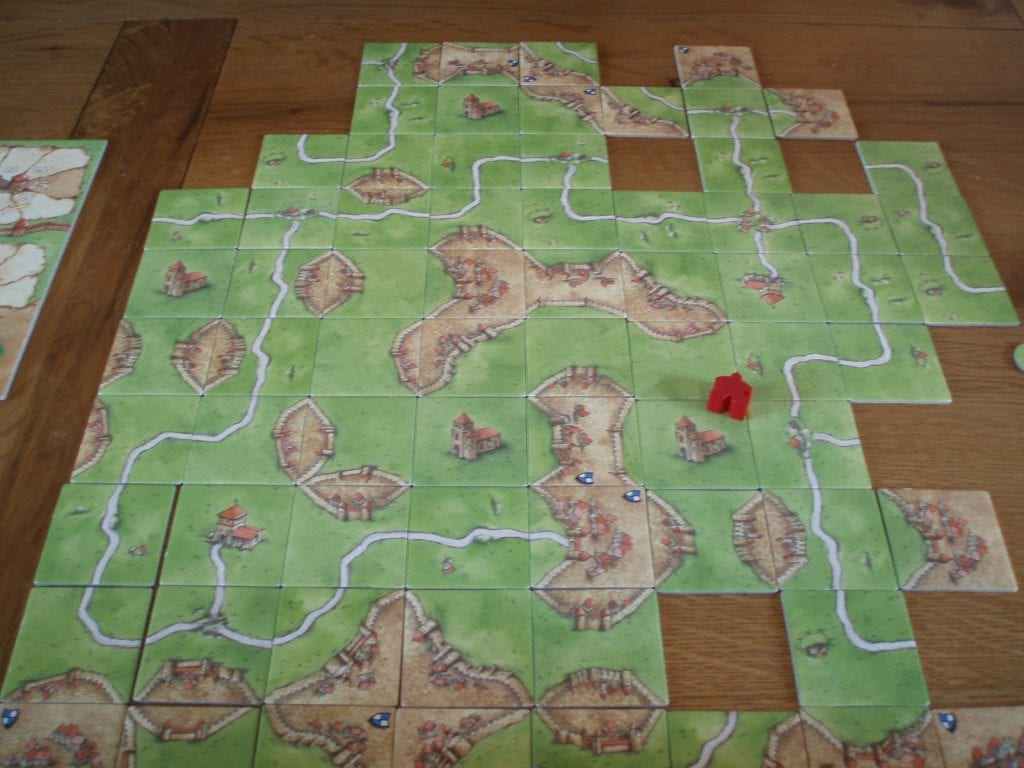
A Word of Warning
Once you start really playing to win it’s hard to go back to the gentle and relaxing game you once knew. You have been warned.
It’s Not About Luck
Let’s start with the biggest fallacy about Carcassonne – it’s down to the luck of the draw. There are 72 tiles in the basic game of Carcassonne, with a decent mix of features on them. Some seem ‘better’ than others and there are times when you may be waiting for a specific configuration to complete your road/city, only for it never to be drawn on your turn.

What tile you get to play on your turn is entirely random, but… that doesn’t mean that luck determines the winner. Here is the first golden rule you should remember when playing Carcassonne:
Every tile is useful.
Yep, that’s right. Every tile. Beginners complain about the luck of the draw, competent players understand that Carcassonne is as much about minimising your opponents’ scores as it is maximising your own. Every tile can be used to further your own score or hinder your opponents. Luck is which specific tile you draw on a turn, skill is knowing what to do with it.
Now that we understand this common misconception, let’s look at just what we can do with those tiles.
Sabotage
You win Carcassonne by having more points than your opponents. Whilst you’re busy scoring points, your opponents are too… unless you stop them.
Take cities as an example. If an opponent finishes building a city they’ll get a decent injection of points. But if they fail to complete the city by the end of the game they’ll only get half the number of points. Perhaps you can help them fail?

The most generous way to do this would be to expand their city, widening its borders and making it harder to complete. There’s a tile that’s all city and several tiles that are cities on three sides. If an opponent is one tile away from completing their city then one of those tiles would make it a lot harder for them to finish it. Depending on how much of the game is left to play, the “gift” of a single city tile might be outweighed by the reduction in points they receive at the end of the game.
More sneakily, you can place tiles to make it trickier for your opponent to complete their city. Since you know where they’re looking to place their next city tile, a road leading into that space would reduce the probability that they’ll pick up a tile with the right city and road orientation to fit the space and finish the city.

These practices are applicable to any feature so if you can’t set up a way to score points on your turn then look for how you can stop your opponents from scoring. With enough practice you’ll soon start to see ways to thwart your opponents on every turn.
Isolation
A Carcassonne player has 7 meeple at their disposal. Once placed, you’ll only get your meeple back when the feature is completed or otherwise at the end of the game. Meeple are your most precious resource and sabotaging an opponent’s feature does more than just limit their points – it strands their meeple for the rest of the game.
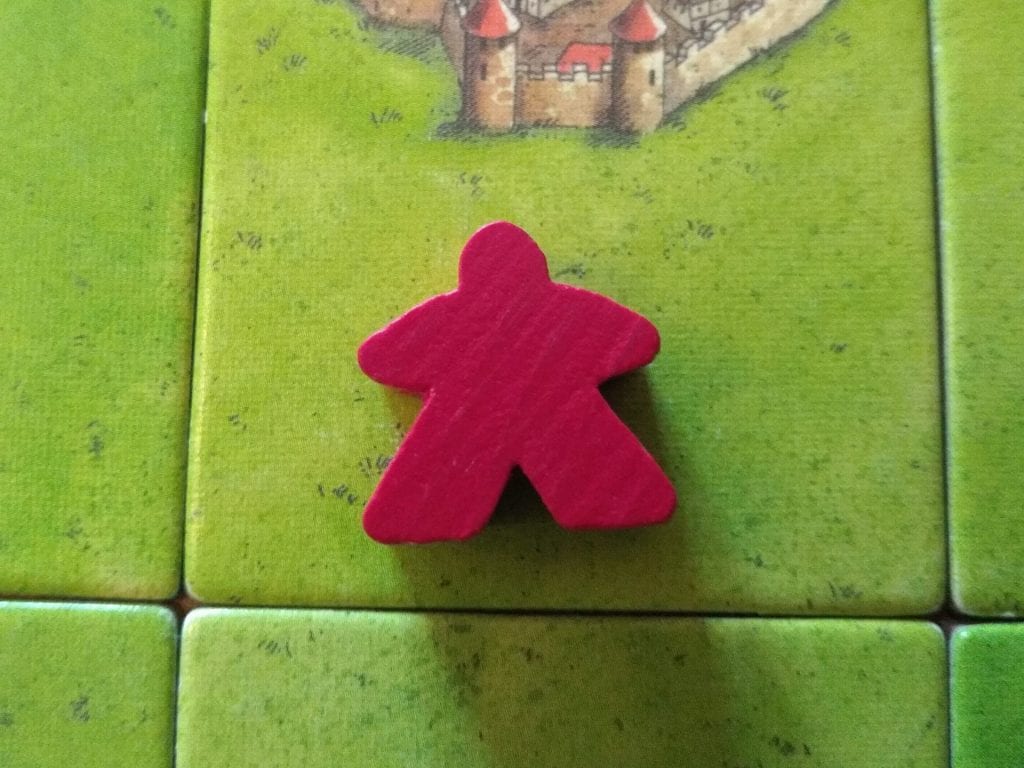
As we’ll see later on, managing your own meeple is a crucial skill but with some clever play you can also mess with how your opponent manages theirs. Finding a way to isolate one of your opponent’s meeple for the rest of the game can be incredibly effective at denying them opportunities for short- and long-term points. On average, each meeple will earn their owner one seventh of their total points. As the game progresses that’s one seventh of the remaining points to be claimed, so the earlier you can isolate an opponent’s meeple the better.
Parasitism
If you can’t beat them join them! Your opponent has spent several turns building a feature so why not profit from all their hard work and place a tile so that when the feature is expanded you’ll be a part of it, gaining points for minimal effort.
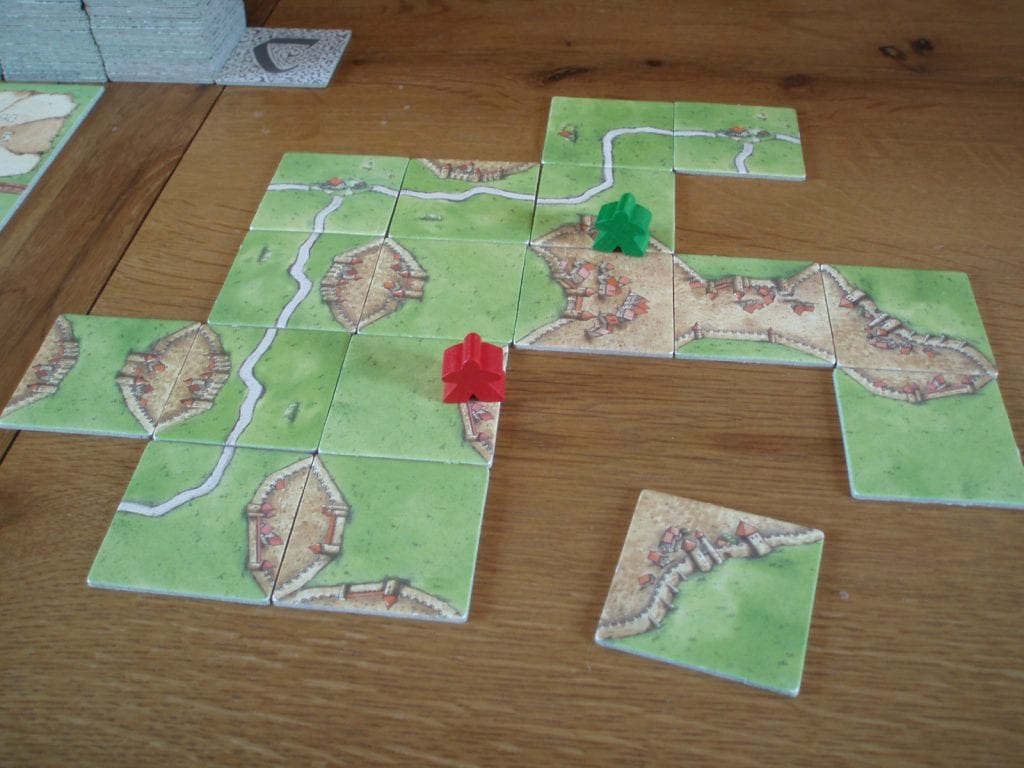
Joining features like this isn’t some secret strategy – there are even examples in the base game’s rules – but beginners rarely use it as effectively as they can. In order to muscle in you need to understand what general patterns of tiles exist and use that knowledge to position your meeple so that the chances of you later being able to connect it with the target feature are high.
For instance, cities are an effective way of getting meeple into fields: start a two-tile city on the edge of an opponent’s field, complete it whilst placing a farmer on the far side (jutting out from your opponent’s field so that the fields aren’t connected), and then place a field-heavy tile to connect your farmer to the main field.
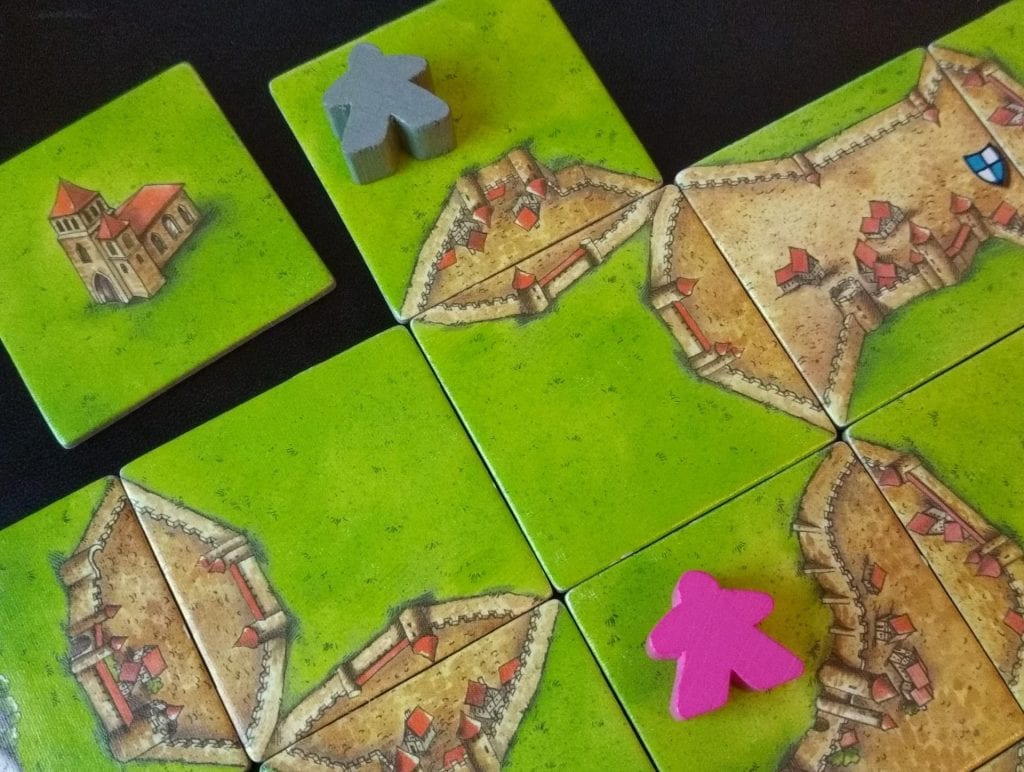
Your opponent will either end up gifting you some points when the feature is joined or they’ll spend valuable turns trying to reclaim or protect the feature – turns they won’t be spending getting new points.
Freeloading
In a similar vein to parasitism, freeloading lets your opponents do the hard work for you. They want to complete their features and you want to complete yours, but sometimes the act of doing one will achieve the other.
Monasteries are the freeloader’s weapon of choice (although it’s not impossible to use roads or cities). Place a monastery next to an opponent’s city and they’ll help you complete your monastery whilst trying to finish their city. Place a road next to an opponent’s monastery and they’ll need to extend it if they want those sweet priestly points. Place a monastery next to an opponent’s monastery and they’ll do half the work for you.
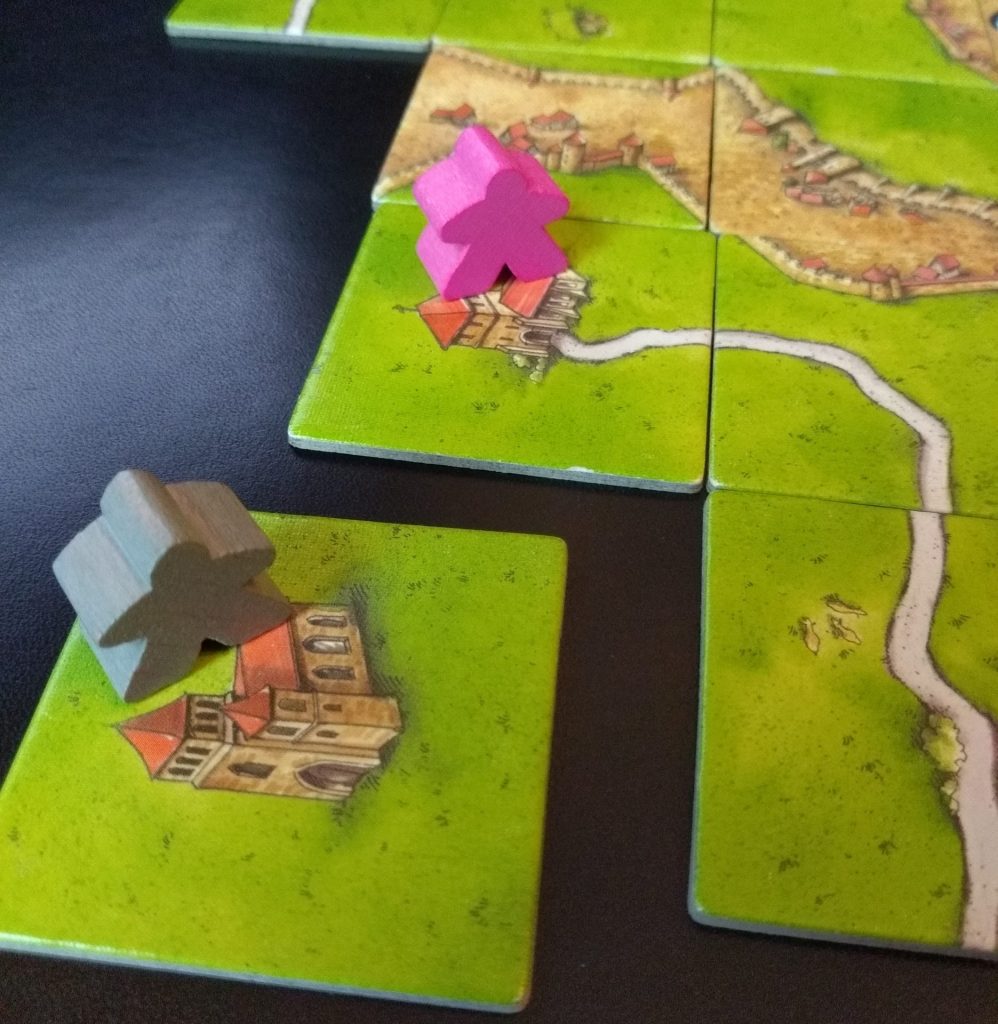
What matters here is that you’re benefiting on your opponents’ turns, whilst using your own turns to score more points or cause problems for them elsewhere on the map. Appropriately for the expansion-heavy Carcassonne, this brings us to the first golden rule’s first expansion:
Since every tile is useful, every turn is an opportunity.
Freeloading reduces the relative value of your opponents’ turns whilst letting you maximise your own.
Double Disruption
At the end of the game each field is scored based on the number of completed cities within it. Some cities will naturally straddle two fields and will therefore be scored twice. If you have the majority in both fields – great! If your opponent owns them both – not great!
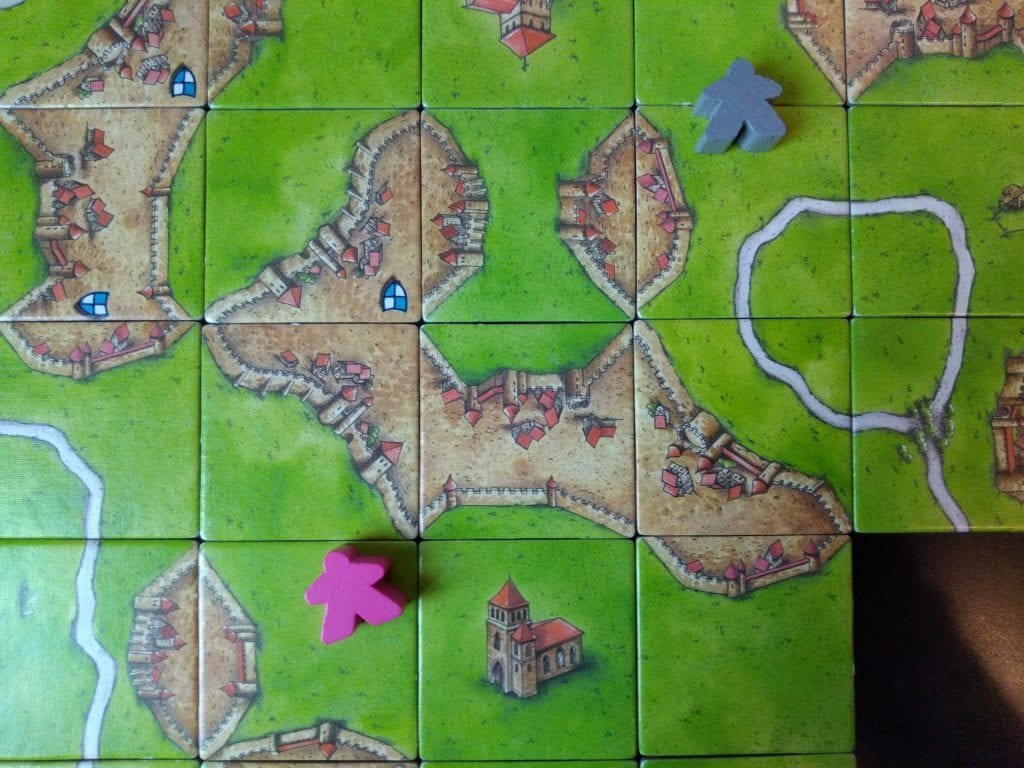
Try to identify where double scoring might occur and farm those fields. If you see that an opponent is benefitting from double scoring then look to join them. If you can’t then consider how you might merge their two fields and prevent them getting double the points from those cities.
Intelligence
So far we’ve learned that sabotage, isolation, parasitism, freeloading and disruption can benefit you and really mess with your opponents. It’s time to discuss the second golden rule of Carcassonne:
Your opponents are just as aware of these tricks as you are.
They will spend much of the game trying to minimise your points and maximise their own. They will sabotage, isolate, parasitize, disrupt and freeload as much as they can. What’s important to learn about the second golden rule is that you can work to limit their efforts.
Take cities as an example. Sure, a huge city will score you lots of points, but the bigger a city is the more likely it is that your opponents will sabotage or parasitize it. Since cities don’t score points exponentially there’s no difference between you scoring one vast city or lots of smaller cities. In fact, if you have the field majority then lots of small cities are both safer and more profitable. In Carcassonne, big is not always beautiful.
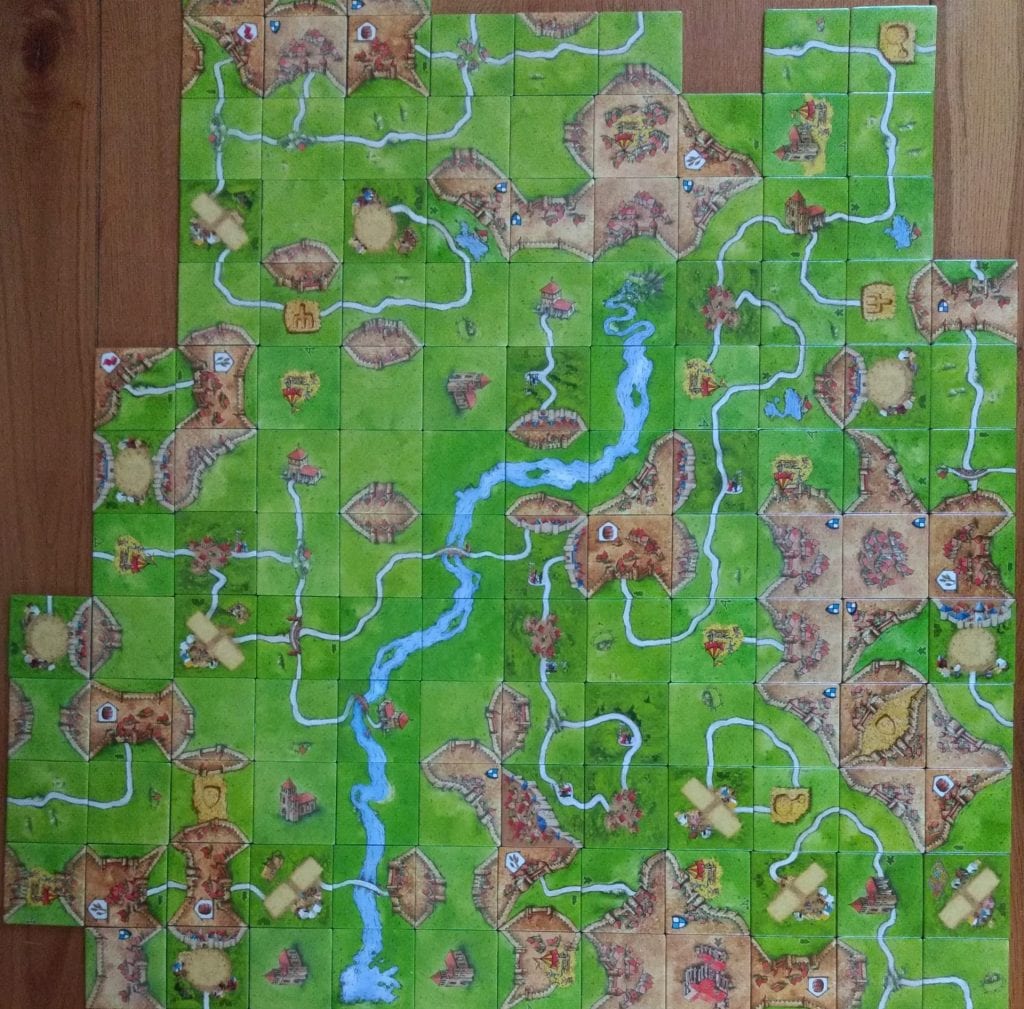
Start to look for how an opponent might try and muscle into your features and then consider how you could block them in much the same way that you block them from finishing their features. Sometimes not finishing a feature is more profitable than letting another player join it. And if you really can’t prevent the merger then let your opponent spend a turn doing it whilst you look for better opportunities elsewhere.
Management
We’ve already seen that meeple are your most precious resource – after all, meeple score points, not tiles.
Manage your meeple effectively, changing your approach as the game progresses. In the early stages of the game you have plenty of scoring opportunities ahead of you so the relative value of each meeple is high. Towards the end of the game each meeple’s value is lower as there are fewer tiles left to place – the costs of a meeple being isolated decrease. By the game’s end it’s often a good idea to have all your meeple in play, scooping up end game points.
Generally though, you’ll always want to keep at least one meeple in reserve for those cases where you place a tile and instantly complete a feature. The others you can allocate to short-, medium- and long-term goals as they come up. Just keep an eye on your meeple numbers and the stage of the game to ensure you don’t end up missing out on juicy opportunities for points.
Advanced Intelligence
Let’s talk tiles. There are 72 tiles in the base version of Carcassonne, with 24 different combinations of roads, cities, fields and monasteries. You can learn them all and count them as they get played. Doing so lets you keep track of what tiles remain to be played and will help you when it comes to all the approaches detailed above. For instance, if you know what tiles remain to be placed then you can use a single tile to sabotage an opponent’s feature, guaranteeing that it’s impossible for them to complete it.
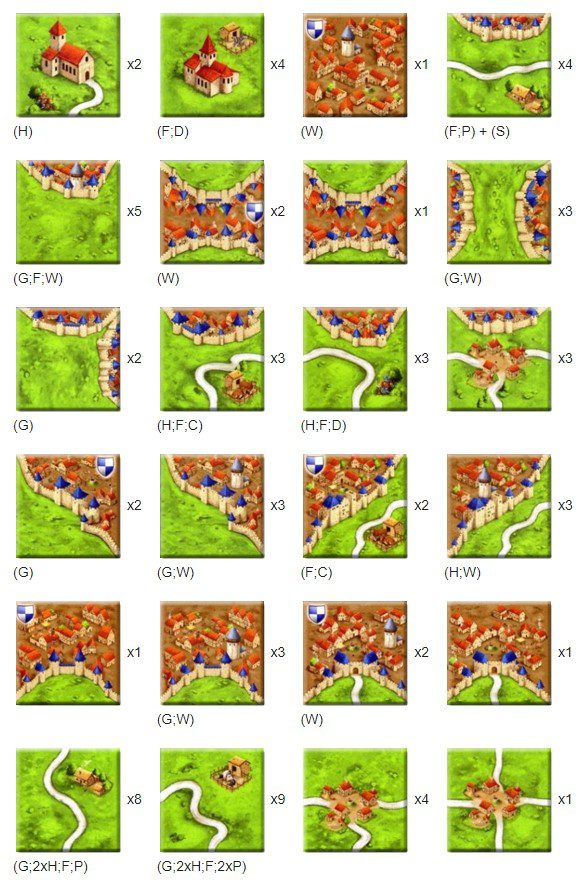
But tile counting is difficult and a fairly extreme approach to Carcassonne unless you want to join the highest echelons of the game. The simplest and best thing you can do is to be aware of those 24 combinations. Even just the knowledge of what patterns exist can help you predict what will work and what won’t, supporting your decisions as you look for points and ways to slow your opponents.
Manoeuvres
Want to get better at Carcassonne? Practice. The world’s best players have played tens of thousands of games of Carcassonne, it’s how they got so good. With plenty of practice you’ll soon start seeing opportunities for points and aggressive plays on every turn.
Whilst you can practice Carcassonne in real life, if you simply want to get better quickly then go digital. Carcassonne has a long history of digital adaptations stretching back as far as 2002. Today there are plenty of opportunities to play Carcassonne digitally, including Apps (check out our review of the Android App), Steam, the Nintendo Switch and BoardGameArena.
Further Training
We’ve come to the end of this brief guide to the core concepts for playing Carcassonne well. But if you really want to improve at Carcassonne then check out 2020’s ‘The Book of Carcassonne’. Written by games journalist Steve Dee and top UK player Dan Chard, The Book of Carcassonne gets into the finer details and advanced strategy of Carcassonne.

The Book of Carcassonne contains a wealth of information on how to play Carcassonne like a pro.
Want to know ideal city shapes and sizes?
Want to get ideas for how to guard against field invasion?
Want to set traps for your opponents?
The Book of Carcassonne covers all that and a whole lot more, including tips for learning to count tiles, advice from World Champions, thoughts on Carcassonne’s many expansions, and an interview with creator Klaus-Jürgen Wrede. It’s about as comprehensive and approachable as you could want from a Carcassonne strategy guide, even if a large proportion of the book does talk about how to ‘kill’ the various features of your opponents.
If you want to get better at this beautiful game, The Book of Carcassonne is undoubtedly your next best step.
Once you start to get better then why not check out Carcassonne tournaments. There are plenty that happen at conventions around the world and many of them feed into the annual Carcassonne World Championships at Essen, Germany, as part of the Spiel Game Fair. Even if you don’t have ambitions of global domination, the World Championships’ website has a list of participating countries with links to the organisers from those countries which may help you identify tournaments close to you.


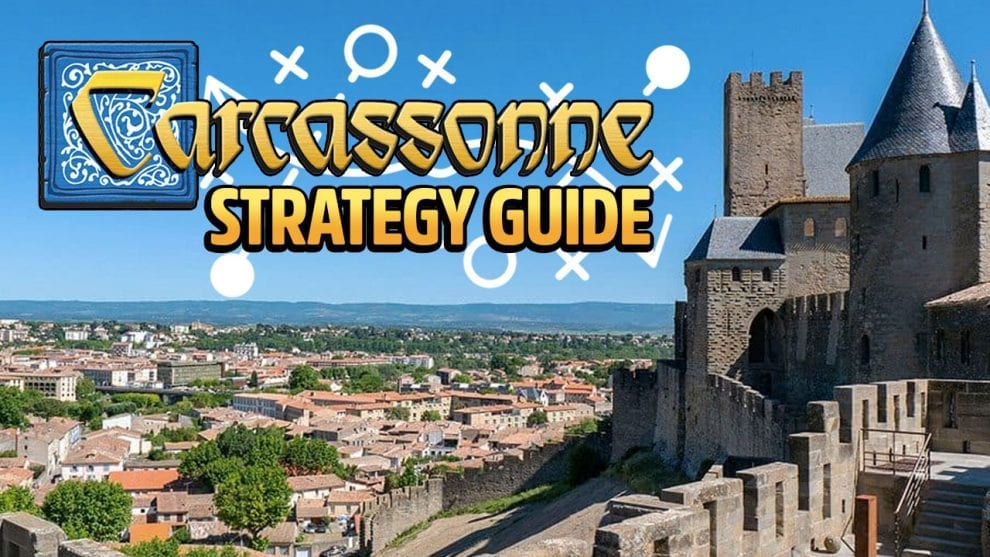









Super helpful; it was especially useful seeing the images of each tile type with quantity after reading some of the strategies you presented!!
So glad you found it helpful Melanie! 🙂 I agree, that image of the tile types and number opened my eyes to the depths of Carcassonne!
Thanks much for the interesting pointers… and I’ve successfully used them all. However, the strategies you highlight are not DEEP strategies. They are simple, surface strategies, and that is about as deep as one can go with this game. Trying deeper strategies will only lead to frustration, because…. yep, the luck of the draw at key moments will beat you 99% of the time. Please allow me to explain.
My wife and I were playing using the Cathedral expansion and the expansion with the castles where you can place them on two-tile cities to double a nearby score. So, I decided to try and work to build a reasonably large city, and build it in such a way that I can put in a cathedral (thus tripling the score). Concurrently, I set up three sliver cities (I call them end caps), planning to castle them just before finishing the main city. These are spread around the circumference of my main city to keep them from being “killed” in one play, with the hope of getting just one of them to double my city score. Halfway through, I need just an end cap to finish my main city. I draw an end cap, and castle a small city. My wife… draws a road with a garden, and kills my castle with her abbot. Next pull… I draw another end cap (amazing!). I castle another small city. My wife… next draws an abbey, and kills that castle (even more amazing!). My next draw… another end cap! Cool… I’m going to pull this off. My wife pulls a road that doesn’t hurt me. I just need an end cap to complete my city, and 1/3 of all the tiles are end caps! My next draw… a road. No help there. My wife’s next draw… another road with a garden. She kills my third castle. And then my draw… the end cap I needed. I complete my city, but ALL three of my castles were killed in just four rounds. This happened not in one game, but two games back-to-back with the same strategy.
And this is how “luck of the draw” kills deeper strategies.
So my advice…. just play the light strategies highlighted above. You’ll do fine with less frustration (though they can really PO your opponent… such as stealing their cities). Deeper strategic moves will only lead to failure and frustration. In all of my games (literally hundreds of rounds), I succeeded only ONCE in pulling off a deep strategic maneuver. This is why, ultimately, I prefer military-oriented operational simulation board games, and not the simpler ones like Carcassonne. Nevertheless, I will continue to play with my wife or others for a quick round of relaxation or entertainment…. I just won’t pursue deep strategic maneuvers.
Hi Russ, you make an interesting point. Really the pointers here are just for the base game (although I’ll admit at least one of the photos has a bunch of expansions thrown in!), once you add in expansions the luck of the draw factor becomes much greater. With just the base game you know (roughly or by heart) the tile probabilities and your turns become based on both outsmarting your opponent and playing the probabilities. Yes you can still get stymied by the occasional luck of the draw but you’re aware of the chance of that happening and choose to take that risk. With the expansions, the tile pool becomes larger so its harder to know what might come out when, and the big scorers like the cathedrals or castles can be a lot more swingy. It’s why the major Carcassonne tournaments are just the base game, not even including the river expansion (which is my preferred way to start).
What I will say though, as someone who’s played hundreds of games, is that whilst the base game by itself is a purer and deeper experience, I personally add in an expansion or two most of the time for the tweaks and changes they add and I enjoy the slight added chaos of not knowing what’s going to come out next and reacting to it.